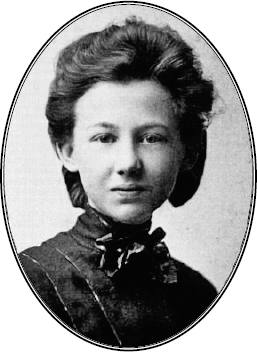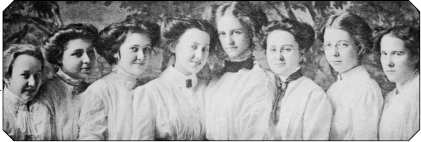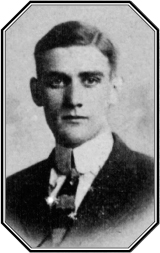Betsy Was a Junior and Betsy and Joe (42 page)
Read Betsy Was a Junior and Betsy and Joe Online
Authors: Maud Hart Lovelace

Betsy took it up:
“Whether we look, or whether we listen
,
We hear life murmur, or see it glistenâ¦.”
She broke off. “I'm happy!” she announced.
“So am I,” said Joe.
There was a pause.
“That was a pretty serious talk last night, that âAfter Commencement Day, What?'” Betsy said.
“Did you think so?” Joe asked.
“Yes. The older I get the more mixed up life seems. When you're little, it's all so plain. It's all laid out like a game ready to play. You think you know exactly how it's going to go. But things happenâ¦.”
“For instance?”
“Well, there's Carney. She went with Larry the first two years in high school. Now he's gone to California and she can't fall in love with anyone else until she sees him again. And how is she going to manage to do that?”
“Well, she isn't through Vassar yet,” said Joe.
“And there's Cab. He thought as much as any of us that he would go through high school, but he didn't, and he never will now. He won't be an engineer at all.”
“He will be if he wants to enough,” Joe replied.
“And there's Tony! On the stage! I always thought Tib was the one who would go on the stage.”
“Maybe she will.”
“And Tacy and I were going to go around the world. We were going to go to the top of the Himalayas, and up the Amazon. We were going to live in
Paris and have French maids. We were going to do all sorts of things, and now that Mr. Kerr has appeared! He says he's going to marry Tacy, and you know how he made Papa stock knitwear!”
Joe laughed. “I don't think he's selling Tacy a bill of goods. I think Tacy likes him.”
“Yes,” Betsy said. “I'm afraid she does.”
“What about you?” Joe asked, looking up at her as he lay in the grass.
“Well, I was always sure I was going to be an author. I'm sure of it still. But I ought to begin selling my stories. I've been sending them out for almost a year now, and I don't even get a letter back. Just a printed slip that says they thank me for thinking of them. Do you write stories and send them out?”
“I write them, but I haven't started sending them out. I'm afraid they aren't good enough.”
“I'm sure they are,” Betsy cried. “I can't imagine you writing anything which wasn't perfectly wonderful.”
Joe looked at her. “I think it's perfectly wonderful that you think so,” he said slowly. “I never had anybody to have confidence in me until I met you.”
“You never needed anybody. You had confidence in yourself.”
“But it's a wonderful feeling, Betsy, having you like me.”
“I liked you the first time I saw you in Butternut Center,” said Betsy quickly, and then she stopped, color rushing up into her face.
“There it goes,” said Joe.
“I can't help it. I shouldn't have said that.”
“Why not?”
“It soundsâ¦bold,” said Betsy, at which Joe laughed and sat up abruptly. He kept on looking at her.
“You're coming to the U, aren't you, Betsy?” he asked.
“Yes, I am. A writer needs a lot of education. Besides, I want to learn a way to earn my living. You can't start living on your stories when your stories don't sell.”
“I'm glad you're going to be there,” Joe said. “Because I am. I'm going to be working at the
Tribune
, you know. I'd like to finish at Harvard, if I can.”
“Harvard!” Betsy breathed in admiration.
“But first of all,” said Joe, “I'm going to go through the U.”
Then he kissed her. Betsy didn't believe in letting boys kiss you. She thought it was silly to be letting first this boy and then that one kiss you, when it didn't mean a thing. But it was wonderful when Joe Willard kissed her. And it did mean a thing.
“Remember what that fellow said last night?”
asked Joe. “âAfter Commencement Day, What?'”
“Of course,” said Betsy. “That's what we've been talking about.”
“I've got the answer,” Joe said. “After Commencement Day, Betsy.” He smiled and looked enormously pleased with himself. “How does that sound?”
Betsy didn't answer.
“It sounds just right to me,” Joe said. “It has the right ring. Sort of a permanent ring.”
Betsy smiled, and her fingers lay in his, but she spoke firmly.
“Never mind how it sounds,” she said. “You've just graduated from high school. You have college ahead of you. You can't go talking about permanent rings.”
Joe's expression changed to gravity.
“I know why you say that,” he said. “You understand, I think, that I've always had a Plan for my life. In order to carry it out, I had to rule out girls, and I didn't mind. Even last fall, although I liked you a lot, I wouldn't let you come into my Plan.
“But I've been doing a lot of thinking, Betsy. That Plan has been twisted about to let you in. You're in it, now, that's all. I wouldn't like it without you. I wouldn't give a darn for my old Plan if you couldn't be in it.”
They looked into each other's eyes and Betsy felt tears in her own.
Joe kissed her again. He took the wild rose, drooping now from the heat, out of her hair, and put it in his wallet and put the wallet in his pocket.
Betsy jumped up. She shook out the skirts of the plaid gingham dress that she had worn because it was Joe's favorite. She picked up the brown straw hat covered with red poppies.
“We must be going,” she said. “Your train leaves this afternoon. Remember?”
“I hope you're going to write me lots of letters,” said Joe. “The kind you wrote last year, sealed with green sealing wax and smelling sweet.”
“Of course I will.”
Hand in hand they went back through the Secret Lane, to the steep road that led down to Hill Street.
But there, at the top of the hill, Joe stopped. They paused and looked out over the townâthe red turret of the high school, the leafy streets, the rooftops, the river, the shining rails that would take him away.
“After Commencement Day, the World!” Joe said. “With Betsy.”
(Adapted from
The Betsy-Tacy Companion: A Biography
of Maud Hart Lovelace
by Sharla Scannell Whalen)

Maud Palmer Hart circa 1906
Estate of Merian Kirchner
M
AUD
H
ART
L
OVELACE
was born on April 25, 1892, in Mankato, Minnesota. Shortly after Maud's high school graduation in 1910, the Hart family left Mankato and settled in Minneapolis, where Maud attended the University of Minnesota. In 1917 she married Delos W. Lovelace, a newspaper reporter who later became a popular writer of short stories. The Lovelaces' daughter, Merian, was born in 1931.
Maud would tell her daughter bedtime stories about her childhood in Minnesota, and it was these stories that gave her the idea of writing the Betsy-Tacy books. She did not intend to write an entire series when
Betsy-Tacy
, the first book, was published in 1940, but readers asked for more stories. So Maud took Betsy through high school and beyond college to the “great world” and marriage.
The final book in the series,
Betsy's Wedding
, was published in 1955.
Â
The Betsy-Tacy books are based very closely upon Maud's own life. “I could make it all up, but in these Betsy-Tacy stories, I love to work from real incidents,” Maud wrote. This is especially true of the four high school books. We know a lot about her life during this period because Maud kept diaries (one for each high school year, just like Betsy) as well as a scrapbook during high school. As she wrote to a cousin in 1964: “In writing the high school books my diaries were extremely helpful. The family life, customs, jokes, traditions are all true and the general pattern of the years is also accurate.”
Almost every character in the high school books, even the most minor, can be matched to an actual person living in Mankato in the early years of the twentieth century. (See page 317 for a list of characters and their real-life counterparts.) But there are exceptions. As Maud wrote: “A small and amusing complication is that while some of the characters are absolutely based on one personâfor example Tacy, Tib, Cab, Carneyâothers were merely suggested by some person and some characters are combinations of two real persons.” For example, the character Winona Root is based on two people. In
Betsy
and Tacy Go Downtown
and
Winona's Pony Cart
, Maud's childhood friend Beulah Hunt was the model for Winona. The Winona Root we encounter in the high school books, however, was based on Maud's high school friend Mary Eleanor Johnson, known as “El.”
Another exception is the character Joe Willard, who is based on Maud's husband, Delos Wheeler Lovelace. In real life, Delos did not attend Mankato High School with Maud. He was two years Maud's junior, and the two didn't meet until after high school. But as Maud said, “Delos came into my life much later than Joe Willard came into Betsy's, and yet he is Joe Willard to the life.” This is because Maud asked her husband to give her a description of his boyhood. She then gave his history to Joe.
Maud eventually donated her high school scrapbook and many photographs to the Blue Earth County Historical Society in Mankato, where they still reside today. But she destroyed her diaries sometime after she had finished writing the Betsy-Tacy books, in the late 1950s. We can't be sure why, but we do know that, as Maud confessed once in an interview, they “were full of boys, boys, boys.” She may not have felt comfortable about bequeathing them to posterity!
Maud Hart Lovelace died on March 11, 1980. But her legacy lives on in the beloved series she created and in her legions of fans, many of whom are members of the Betsy-Tacy Society and the Maud Hart Lovelace Society. For more information, write to:
Â
The Betsy-Tacy Society
P.O. Box 94
Mankato, MN 56002-0094
www.betsy-tacysociety.org
Â
The Maud Hart Lovelace Society
277 Hamline Avenue South
St. Paul, MN 55105
www.maudhartlovelacesociety.com

Murmuring Lake Inn, where the Rays vacation, is based on Point Pleasant Inn at Madison Lake, Minnesota. There is an inn called Point Pleasant on the same site today, although it's not the same one
.
Collection of Point Pleasant

Maud's older sister, Kathleen, at the lake
.
Estate of Merian Kirchner
T
HE PERIOD
from 1908
TO
1909, which corresponds to the account of Betsy Ray's junior year in
Betsy Was a Junior
, was an eventful one in Maud's life. As is the case with all of the Betsy-Tacy books, much that happened to Maud made its way into the storyâalthough at least one major event did not.
Betsy Was a Junior
opens at the end of an idyllic summer spent by the Rays at Murmuring Lake. But the summer of 1908 was not quite as idyllic for Maud or her friends. A typhoid epidemic caused by contaminated water struck Mankato in June. The situation was so serious that the head of the public works board was forced to resign and the city engineer was removed from office, accused of dereliction of duty.
Maud's family, vacationing at Madison Lake, was far enough away from Mankato to be relatively safe. But several of Maud's friends and their families were affected: Mildred Oleson (Irma) and her parents, Bick's (Tacy's) father, and Marney's (Carney's) father were struck with the fever. Fortunately, they all survived. But Paul Ford (Dennie) lost his father, and Tom Fox (Tom Slade) lost his motherâa blow to the Harts, who had always been close to the Fox family.
Although the typhoid epidemic is not mentioned in the story, it may have found fictional form in the death of Cab's father and Betsy's new-found maturity at the end of the book.
Like Betsy, it appears that Maud and her crowd had lots of fun during their junior yearâperhaps as a reaction to the sobering events of the summer. A happy occurrence at the beginning of the book is Tib's return to Deep Valley. Although it didn't happen in quite the same dramatic fashion, Midge Gerlach, one of Maud's closest friends, did return to Mankato after spending several years in Milwaukee. Midge instantly became one of the Crowd and was often right in the thick of things, as can be seen in many Crowd photographs of that time.
Another important factor in Crowd fun was the Willard family auto. As his fictional counterpart, Mr. Sibley, said he would do in
Heaven to Betsy
, Marney's father, W. D. Willard, purchased an auto at around this time. In an unpublished memoir, he described it as follows: “We bought our first automobileâa two-cylinder Buick, two seater, engine under the floor, right side steering, shift outside, acetylene lamps (which were very uncertain).” It cost Mr. Willard a grand total of $1,178.95.

Some of the Crowd in the Willard (Sibley) family's second auto. Midge (Tib) is at the wheel with El (Winona II) at her side. Bick (Tacy) is in the backseat, at the far left
.
Estate of Merian Kirchner

The Oktw Deltas, from left: Midge (Tib); Mildred (Irma); Bick (Tacy); Maud (Betsy); El (Winona II); Marney (Carney); Ruth (Alice); and Tess (Katie)
.
Estate of Merian Kirchner
This is the year that Maud's sister Kathleen left Mankato to attend the University of Minnesotaâor the “U,” as it is still called by state residents today. Like Julia, she was swept up in the sorority rushâshe pledged Gamma Phi Beta in real life, not the fictional Epsilon Iota.
As in the book, sororities also became part of Maud's life. Dazzled by Kathleen's description of sororities, Maud and some of the rest of the Crowd formed Oktw Delta. (Maud used this spelling, but the word appears as “Okto” in the book.) The eight girls who joined were the same as their counterparts in the book. Maud's scrapbook contained many Oktw Delta souvenirs such as placecards from a progressive dinner and a program from a party given by eight of the boys for the sorority.
We can guess that the real-life Oktw Delta did not create such bad feeling in the high school as the fictional one did. Unlike Betsy, Maud
was
named head of the entertainment committee for the Junior-Senior banquet, and the Oktw Delta organization was not disbanded at the end of Maud's junior year. A December 1910 article in the
Mankato Free Press
reads: “The Oktw Delta club gave its annual progressive dinner last eveningâ¦. On Monday evening, the club gave its annual Christmas tree.” Evidently, the club survived for at least another two years.

The sheet music for the “Morning Cy Barn Dance.”
Betsy-Tacy Society Archives
This cartoon of Maud was pasted in her high school scrapbook. The labels point to “naturally curly hair,” “red dress,” and “red socks,” and the name on the dance card is “Bob.”
Blue Earth County Historical Society
A new member of the Crowd and Betsy's love interest in the book is the silent Dave Hunt. During her junior year, Maud dated a boy named Robert (Bob) W. Hughes, who appears to have been the inspiration for Dave. We don't know for sure if he, too, was the strong, silent type, but it seems quite likely.

Maud appears just as pleased about her Christmas furs as Betsy is in the story
.
Collection of Minnesota Valley Regional Library

Betsy's silent beau, Dave Hunt, was based on Bob Hughes
.
1910 Annual
Maud also received a curling iron as a joke present at a class assembly. Pasted in her high school scrap-book is a card signed “Class 09,” which reads: “Miss Maude Rosemond Palmer Hart Jones Gifford Hodson Wells Hoerr Morehart Ford Hughes Weed & etc. We would like to see you curl that new crop of whiskers now flourishing on your lily-white intellectual brow.” Maud appears to have been even more popular with boys than Betsy!

Crowd members on the 1908 Mankato High School Football Team pictured here include: Bob Hughes (Dave Hunt) in the back row, second from left; Paul Ford (Dennie) in the middle row, second from right; and Jab Lloyd (Cab) in the front row, third from left
.
Estate of Merian Kirchner
At the end of the book, Betsy reflects on the past year of silliness and resolves to be more grown-up. We don't know if Maud made a similar resolution, but like Betsy, Maud certainly had a rollicking junior year.
